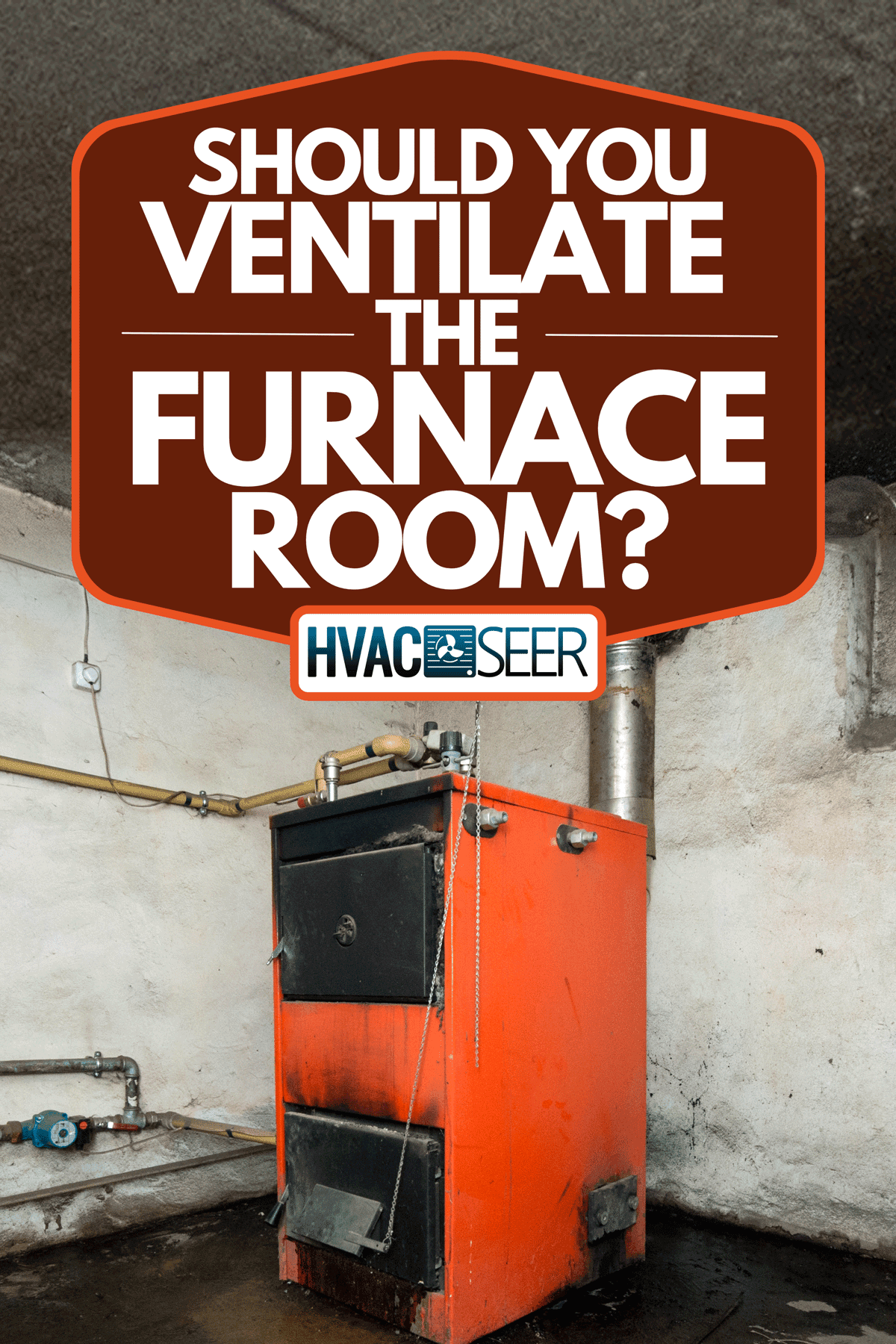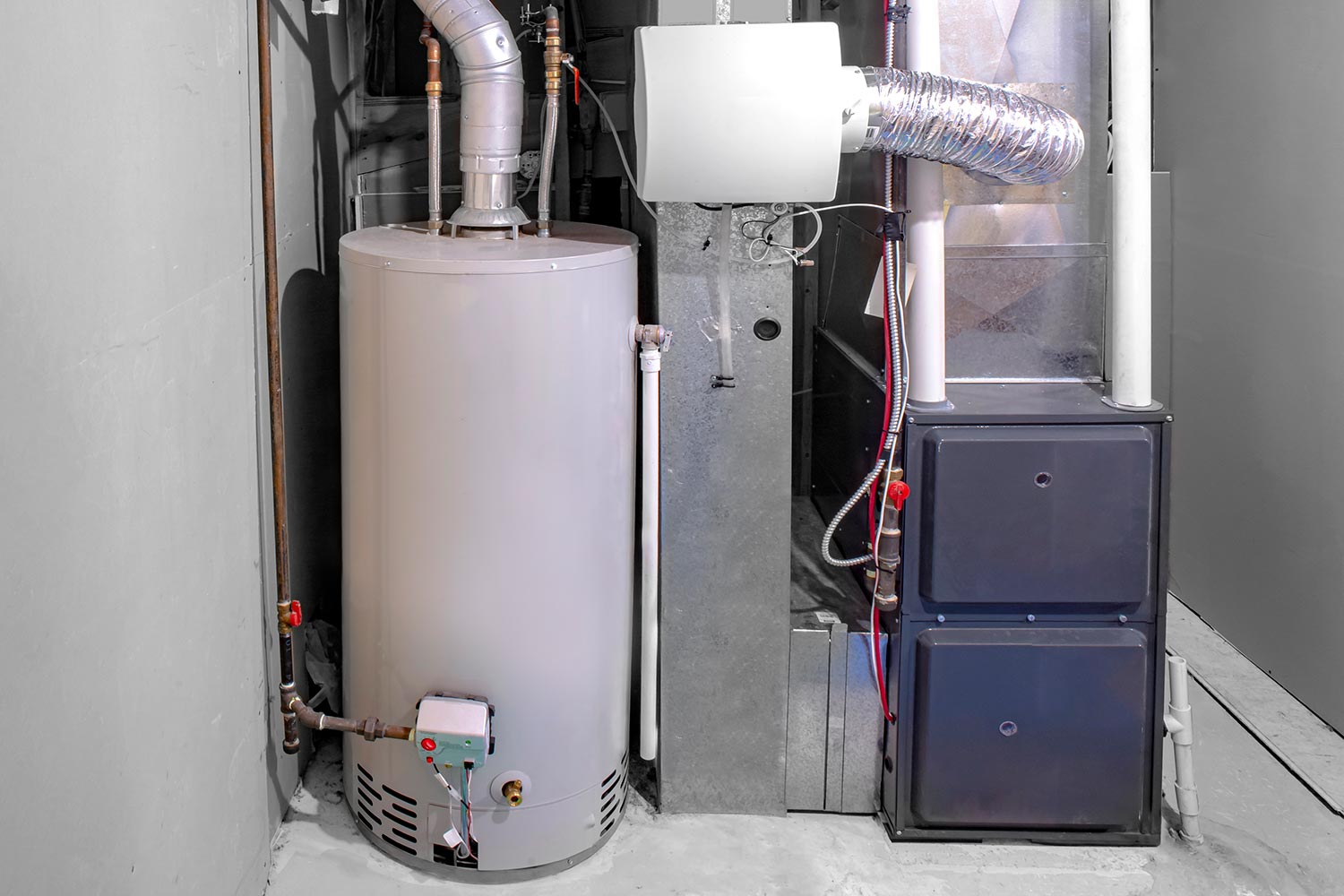The furnace is easily one of the most integral parts of a comfortable living space. Yet, the furnace is kept tucked away in a small closet area for many older homes, leaving many to wonder how it even gets the air for its combustion. So what's the deal? Should you ventilate your furnace room? How much does it require? We here at HVACSeer.com have researched the subject for you and written on it down below.
Most new building codes require you to ventilate in-house gas-fired appliances such as water heaters with an outside source. Doing this provides the unit with adequate combustion air. Electric furnaces and water heaters do not require ventilation to support combustion. Safety and effectiveness are the leading causes for these updated building codes.
There are several factors at play here when it comes to ventilation in your furnace room. Where the air should come from, how to get the most for your money's worth, etc. So continue reading as we delve more into the subject down below.

Furnace Room Ventilation
There are many good reasons to ventilate your furnace room properly. Adding proper ventilation to your furnace room will help it burn better and save you money and energy usage. Understanding the mechanics of how your furnace works goes a long way in understanding the importance of ventilation.

Combustion
Burning, as a process, requires three things before it can occur—a type of fuel, air to burn, and an ignition source. In your furnace, the fuel is typically natural gas. The ignition source comes from either a pilot light or the spark igniter. The air needed to support combustion enters the water heater through the vents near the burners.
The results of combustion include heat, a bit of water, carbon monoxide, and carbon dioxide. These waste products are exhausted through the roof via the vent pipe. So the question now becomes, where does the air necessary for combustion come from?
Ventilation from Inside the Home
If your furnace or closet lacks outside ventilation, the required air has to come from inside the house. This can prove problematic for several reasons, ranging from efficiency to safety.
When your gas furnace works, it actively pulls air into the combustion chamber, exhausting it through the roof vent. This combustion airflow creates a negative pressure condition inside your home. This negative pressure condition can create several consequences in your home.
The biggest danger of not having adequate combustion ventilation in your home is the possibility of combustion gas backflow. Combustion produces both carbon monoxide and dioxide, both dangerous in concentration. Carbon monoxide is especially dangerous, and if your negative pressure condition is strong enough, it can reverse the airflow back into your home.
There is also the matter of money inefficiency when it comes to inside heating. You already use your own money to heat the air inside your home. Inside combustion means that money is going right up your flue.
Read now on HVACSeer.com: '5 best heaters for a detached garage'
How Do you Ventilate a Furnace Room?
So now that we know some of the reasons why to ventilate a furnace room, the question becomes how to ventilate a furnace room? The answer to this is obviously impacted by where your furnace is in your house. Say, for example, your furnace is in an interior heating closet. How does one go about getting outside air into that space? It is possible.
Depending on building codes in your area, you will need to install either a double pipe system or a single pipe with a double inner layer. The size of the exhaust vents will depend entirely on the size of your furnace. The size of the closet doesn't impact this at all. You need the required venting for safety, but as long as you extend the pipes to the roof or outside walls, you don't need to worry about the closet.
Space and Insulation
Space and insulation are bigger concerns for closets. Make sure your door is large enough for the biggest part of your furnace. If you have other appliances in your closet, make sure you can remove them without disturbing your furnace. You will need to have access to your furnace for future maintenance.
Ventilation of the space is important to avoid starting fires. Heat can safely escape if there is the air around the furnace. Do not install your furnace in a storage closet. Remove any material, including insulation, from the closet before installing your furnace.
Why is my Furnace Room so Hot?
While you want your furnace to produce hot air for your house, you don't want it to get so hot it overheats. Overheating can cause lasting damage to your furnace and heating machinery and can lead to fire hazards, as mentioned above. One of the biggest reasons for overheating in a furnace is the blockage of pipes and vents.
With nowhere for the hot air to escape and circulate, these blockages cause the internal temperature to drastically increase, and overheating occurs. Another cause of overheating can be placing something too close to the air return inlet of the furnace, blocking it off. Make sure your room is as empty of clutter near the furnace as possible so that it doesn't get blocked off.
If neither of these quick fixes are helping things, get a professional inspection done. It can possibly be a matter of grave safety.
Should a Furnace be Hot to the Touch?
Most properly working furnaces should be just a bit above uncomfortable to the touch when running. When you touch the main trunk just above the main unit, make sure it's not running super hot. This would be an indication of the problems we mention in this article.
Also, keep a lookout for any smoke or acrid smells as these are never normal behavior for a safely functioning furnace.
For rough estimates on how hot your furnace should get, knowing the air temperatures is helpful. When combustion occurs in your average air furnace, the air heats up to a range of 140 to 170 degrees. A gas heater is designed for a range of 70 to 90 degrees as the air passes through the furnace.
Read now on HVACSeer.com: 'Do convection heaters get hot?'
Is a Furnace a Fire Hazard?

Furnaces can become fire hazards if they aren't properly maintained. The best thing you can do to keep your home safe from fire is to make sure your furnace is clean and well maintained. Below are some ways your furnace can quickly become a fire hazard and how to avoid them.
Make Sure your Motor Doesn't Overheat
As mentioned above, there are a few ways your motor could overheat, most of them due to an accumulation of filth. A dirty air filter will quickly restrict the air filter, causing it to overheat. This not only will impact the efficiency of your air filter, but it could also potentially start a fire in your filter.
Dirt and debris can also accumulate around the motor, acting as unwanted insulation. Faulty or bad wiring can cause high voltage, while tight or worn motor bearings can catch heat when dry and eventually catch fire. Make sure your bearings always have proper lubricant.
Be Careful of Flammable Materials Nearby
Things like gasoline, paper, clothing, or dried leaves should never be kept near a heating system. Leave at least three feet between any combustible material and your furnace system at all times. If possible, store these items in a completely separate area if your furnace is in an enclosed area such as a closet.
Always Engage in Thorough Maintenance
Whether it's a mere visual inspection or more rigorous maintenance, looking over your furnace is critical. Monthly visual inspections for dents, cracks, and loose valves can catch a small problem before it escalates.
Make sure your ignition lights are burning blue and not yellow or another color. If your light isn't blue, there is a problem with your combustion that needs to be checked immediately. Listen for unusual sounds and refer to your user's manual to learn when vents and filters may need to be cleaned or replaced.
In Closing
Our heating is one of the most important things in our home. It provides comfort and safety to us in the cold months and makes living a much more enjoyable experience than living without it. For many of us, it's a necessity to live in colder climates. But furnaces coupled with human error and negligence have proven to be a dangerous combination if not taken seriously. You owe it not only to your home as a homeowner but also to your family to properly maintain your heating system.
Whether it's ventilation, keeping it properly cleared and maintained, or any of the other things we outlined here, we hope this article helps keep you safe and comfortable in the years of homeownership to come.
